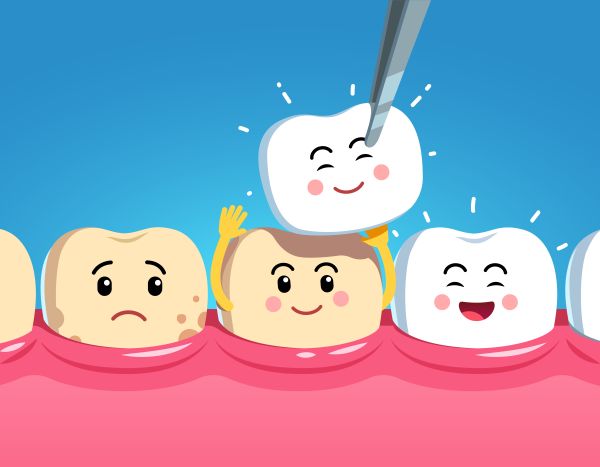What Are Dental Veneers?

If you are considering dental veneers, it is important for you to learn everything you can about them. Veneers are a popular cosmetic option when you need a smile makeover. A dentist may recommend them if you are looking for a way to get a more symmetrical or aesthetically pleasing look for your teeth.
FAQs about dental veneers
When a person is considering dental veneers, there are questions that they may want answered. Knowing the different facts behind veneers can help a person decide if this cosmetic option is the right one for fixing specific dental problems.
What are dental veneers?
Dental veneers are wafer-thin shells crafted from a tooth-colored material. Veneers attach to the surface of a person’s teeth. This enhances the appearance of the tooth in question.
What types of veneers are there?
The most common types of veneers are porcelain and composite bonding. Composite veneers are made of a resin material that the dentist will shape and bond to the tooth to change the size, shape or color. This is in contrast to porcelain veneers. A lab crafts porcelain veneers, which are generally more resistant to stains.
Which is the recommended type?
A dentist can recommend what type of veneer to use. If a person has minor changes and functioning teeth, composite bonding is a good choice. If the patient has a habit of grinding and clenching teeth or has broken or spaced out teeth, porcelain may be a more appropriate choice.
When should someone choose dental veneers?
Veneers are a good option for people with chipped, worn down, stained, crooked or irregularly shaped front teeth.
How do dental veneers work?
With porcelain veneers, the process is multi-stepped. First, a consultation will take place. X-rays and impressions of the teeth may be necessary. The dentist will then remove a small amount of tooth structure. At this point, the dentist can place a temporary veneer. The impression of the tooth will go to a dental lab where the veneer is then created.
At the patient’s next appointment, the dentist will remove the temporary veneer and bond in place the porcelain dental veneer. If using a composite veneer, it will only take one appointment to place. A small amount of tooth structure removal will happen. Then the dentist will bond the filling material onto the patient’s tooth.
How many veneers are necessary?
A dentist can recommend how many veneers a patient will need. It is generally considered a good idea to have an even number of veneers in place to achieve an aesthetically pleasing appearance.
How are veneers taken care of?
Follow normal oral hygiene habits. This includes brushing twice a day, flossing once a day and going to the dentist for regular checkups and professional cleanings.
Understanding veneers and their roles
Once you understand what veneers are and the role they can play, it is up to you to decide if you want this cosmetic option. Knowing the facts behind veneers can help you make your decision. You can also ask a dentist for a recommendation on which type to use and whether it is a good decision for your aesthetic needs.
Are you considering getting dental veneers in the Hemet area? Get more information at https://hemetdentalcenter.com.
Check out what others are saying about our services on Yelp: Read our Yelp reviews.
Recent Posts
Over the years, tooth extraction has become more seamless than it once was. Many advancements have been made, which make the procedure more comfortable and less painful. However, it still helps to know what to expect so you can prepare.Getting a tooth extracted is not as scary as most think. In fact, most extractions only…
There are two types of tooth extractions: simple and surgical. Simple extractions are for teeth that are entirely exposed and can be accessed above the gumline. Surgical extractions require an incision into the gumline or connective tissue. The type a patient needs depends on the cause and state of the tooth. Here are six reasons…
A dental inlay is one of several restorative options available to repair damaged teeth and preserve oral health. When decay, fractures, or wear compromise the strength or structure of a tooth, dentists consider the severity and location of the damage to determine the most appropriate treatment. Understanding the differences between a dental inlay, onlay, filling,…
Whether you recently had a tooth extraction or are preparing for the procedure, there are a few guidelines to follow after oral surgery. Properly caring for your health can help you recover as healthily as possible and reduce the risks of complications. Here are some tips to help you have a comfortable and speedy recovery.In…


